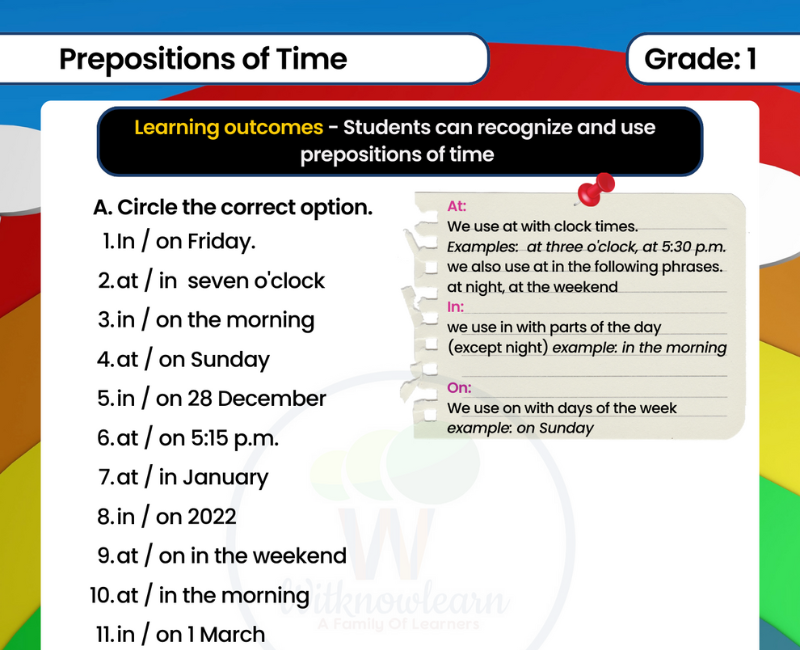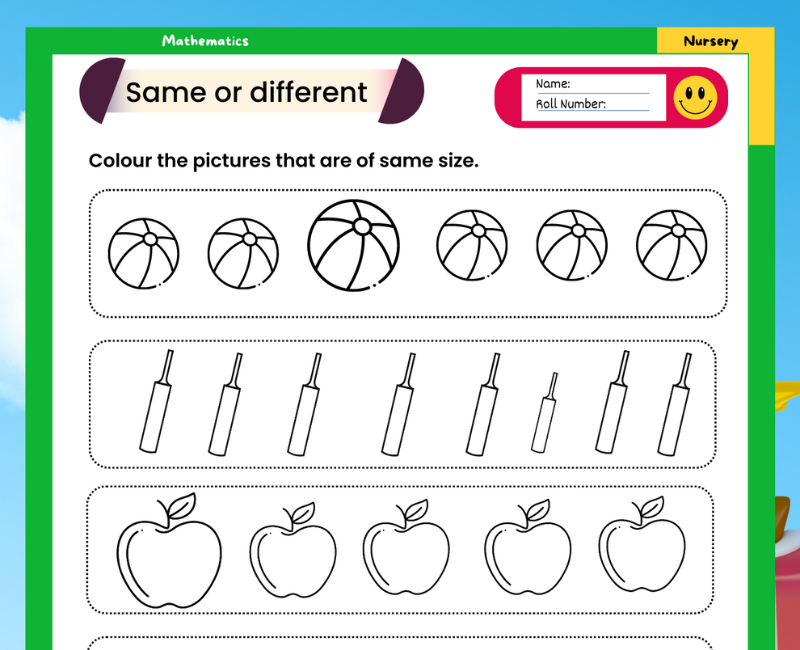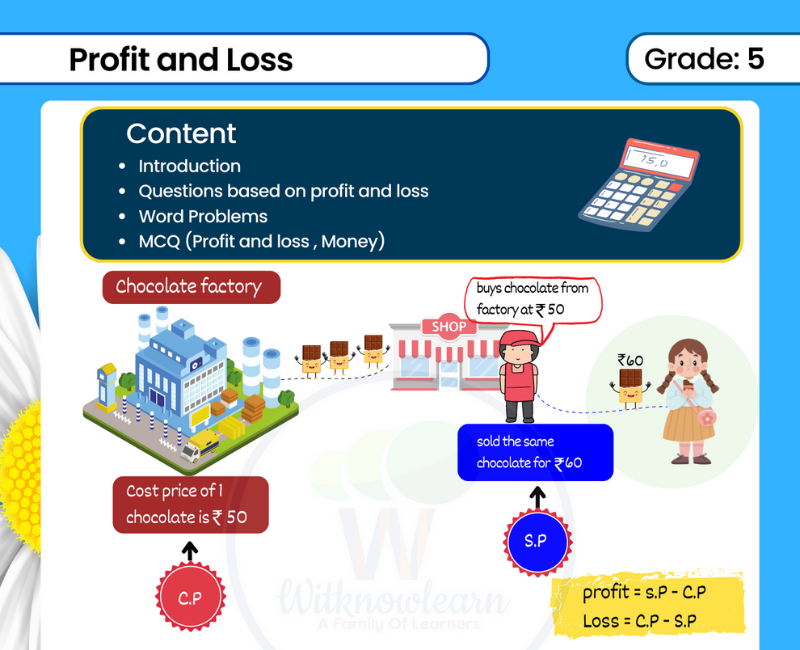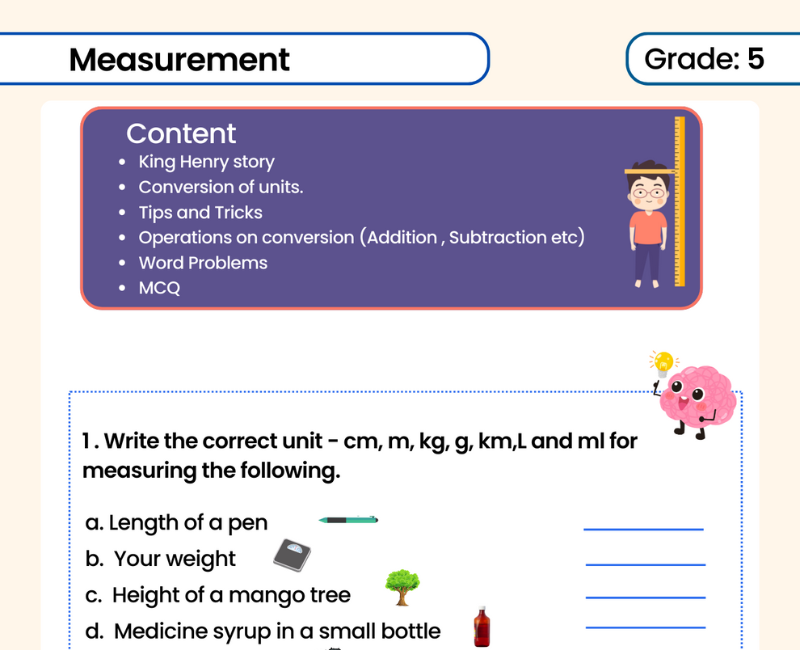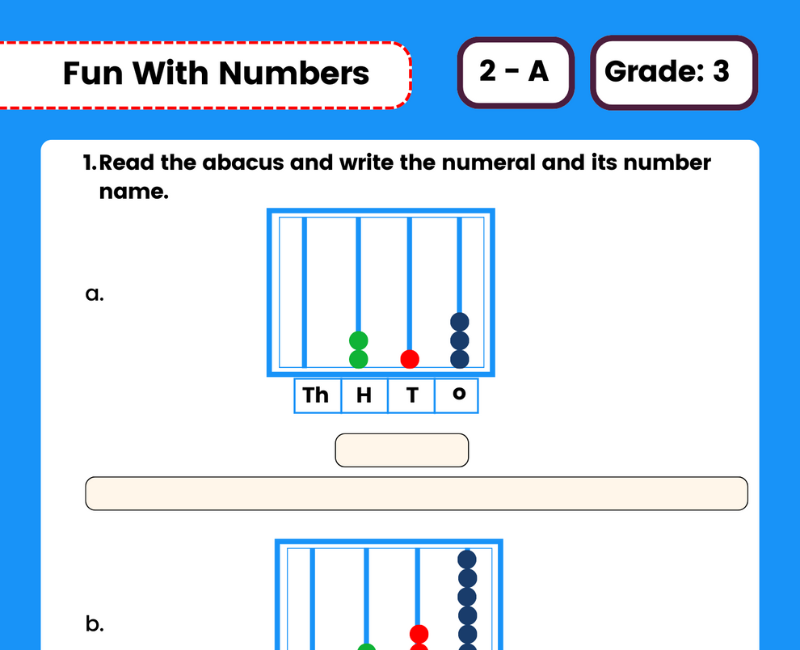A Comprehensive Preposition of Time - Preposition in at on worksheet for class 1
Looking for resources to teach preposition in at on worksheet for class 1 students? Our comprehensive Preposition of Time Definition worksheet is the perfect place to start. This worksheet provides clear explanations and examples of prepositions of time, such as 'at', 'in', and 'on', and helps students understand their use in language.
We also offer a range of Preposition of Time Worksheets in PDF format, with exercises and activities to reinforce learning and improve understanding. With 20 Examples of Preposition of Time included, students will have plenty of opportunities to practice using prepositions in context.
For those looking for a broader range of preposition worksheets, our collection includes worksheets covering prepositions of place and use of 'with' prepositions, as well as worksheets focusing on the use of 'is', 'am', and 'are' for Class 1 students. Download our Worksheet of Preposition for Class 1 today and help your students master the fundamentals of language.
Help your students in Class 1 understand the nuances between the prepositions of time 'at', 'in' and 'on' with our useful, printable worksheet. It includes a step-by-step guide to using each one as well as plenty of examples to clearly illustrate their practical usage.
Introduction to Prepositions of Time – at, in and on.
As educators and caregivers, we all know the importance of teaching children prepositions of time and place. These concepts help children understand how objects and events relate to each other in time and space. One effective way to help children grasp these concepts is through the use of in, at, on worksheets.
In, at, on worksheets are designed to help children understand the correct use of prepositions in sentences. These worksheets provide students with an opportunity to practice using prepositions of time and place in context. They help students learn to identify the appropriate preposition to use in a sentence based on the time or location being described.
One common type of preposition of time worksheet is the "in on under worksheet for Class 1" worksheet. These worksheets typically feature a series of sentences with blanks that students must fill in with the correct preposition of time. For example, a sentence might read, "The party is ___ Saturday." Students would need to select the correct preposition ("on") to complete the sentence.
Another popular type of in, at, on worksheet is the "preposition in on at worksheet pdf." These worksheets often include a variety of exercises, such as matching exercises and fill-in-the-blank exercises. These exercises help students develop a deeper understanding of how prepositions are used in context.
For younger students, such as those in UKG, in, on, under worksheets for UKG pdf can be an effective tool for teaching prepositions of place. These worksheets typically feature simple illustrations of objects and locations, such as a cat on a mat or a book under a desk. Students must use the appropriate preposition to describe the relationship between the object and the location.
When selecting in, at, on worksheets for your students, it is important to choose ones that are appropriate for their level of understanding. For example, if your students are just learning prepositions, you may want to start with simple fill-in-the-blank exercises. As they become more confident, you can introduce more complex exercises, such as matching exercises or exercises that require them to use multiple prepositions in a single sentence.
In addition to using in, at, on worksheets in the classroom, parents can also use these worksheets at home to help their children practice prepositions. By incorporating these worksheets into their daily routine, parents can help their children develop a stronger understanding of prepositions and improve their overall language skills.
Overall, in, at, on worksheets are an effective tool for helping students develop their understanding of prepositions of time and place. By choosing appropriate worksheets and incorporating them into lesson plans, educators and caregivers can help their students become more confident and competent in their use of prepositions.
